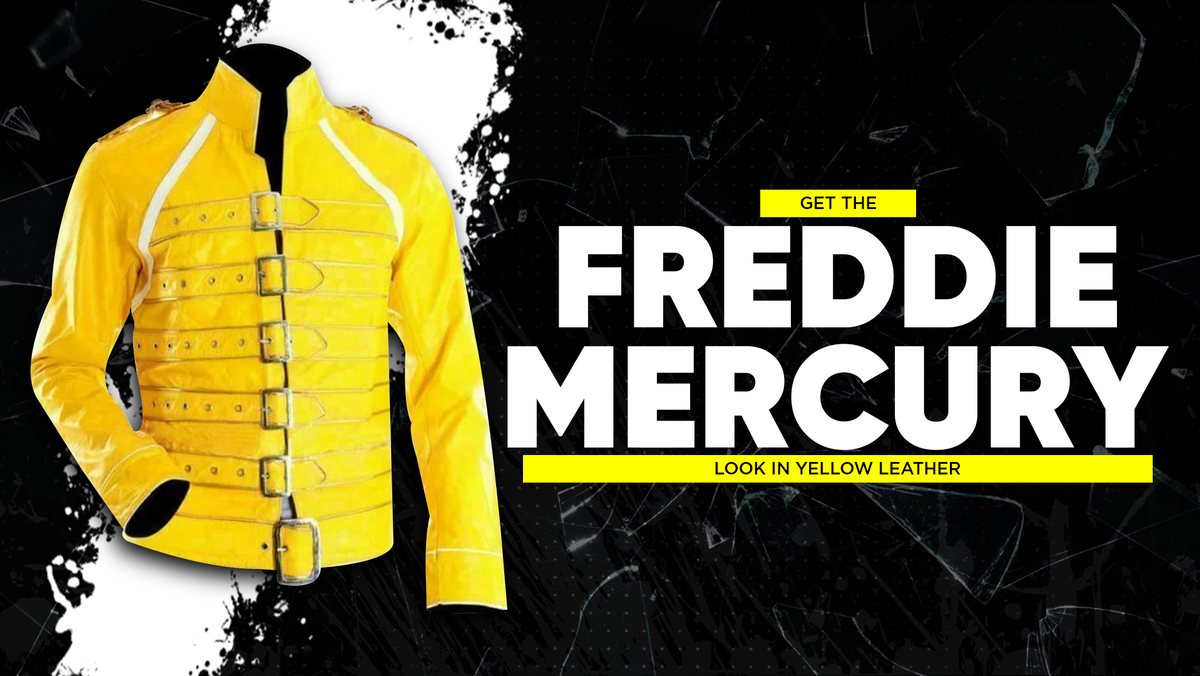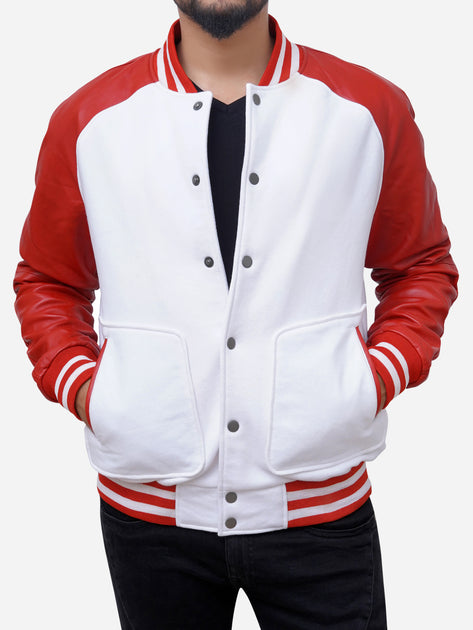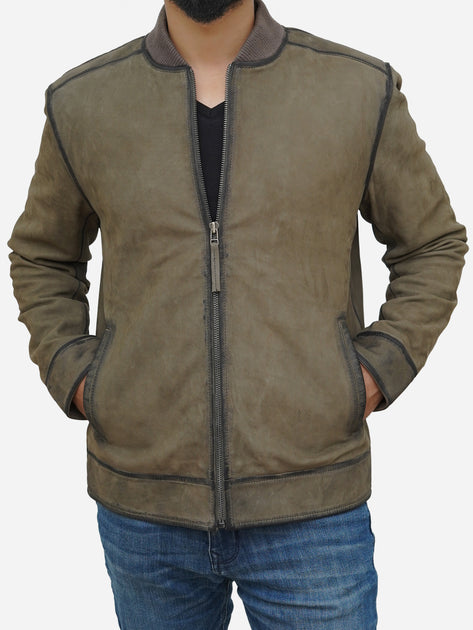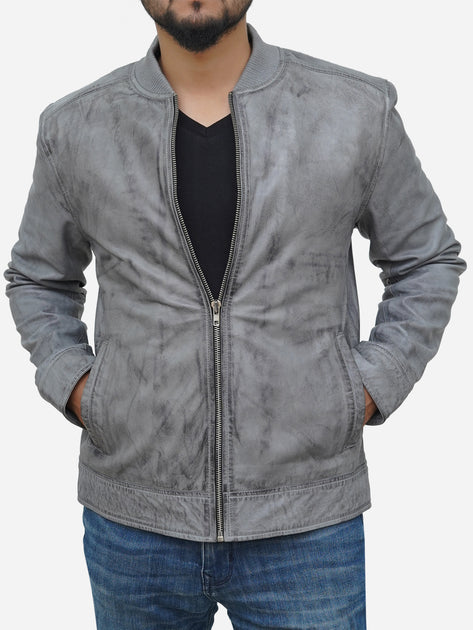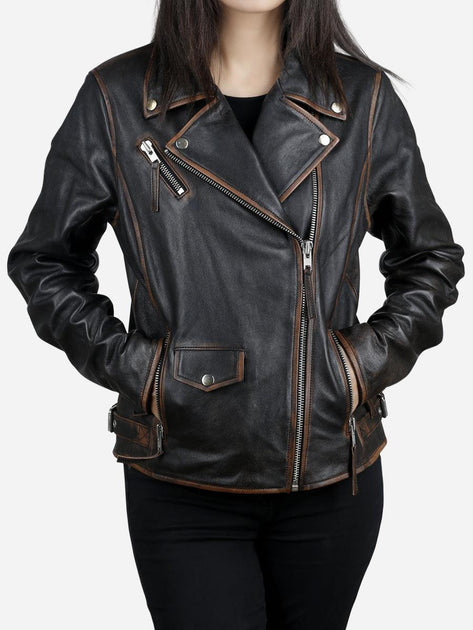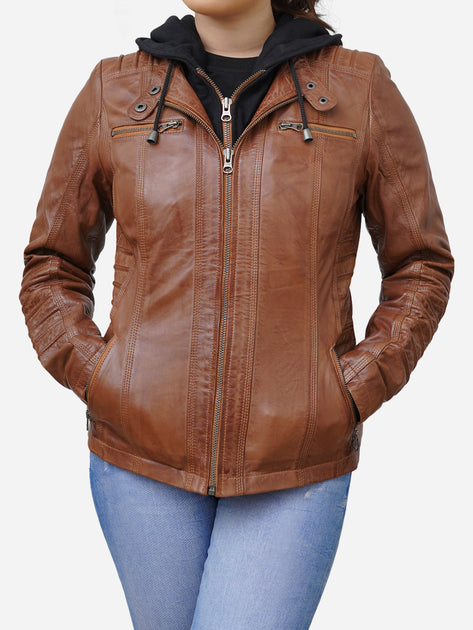How to Identify Real Leather - An A to Z Guide With Proven Ways!
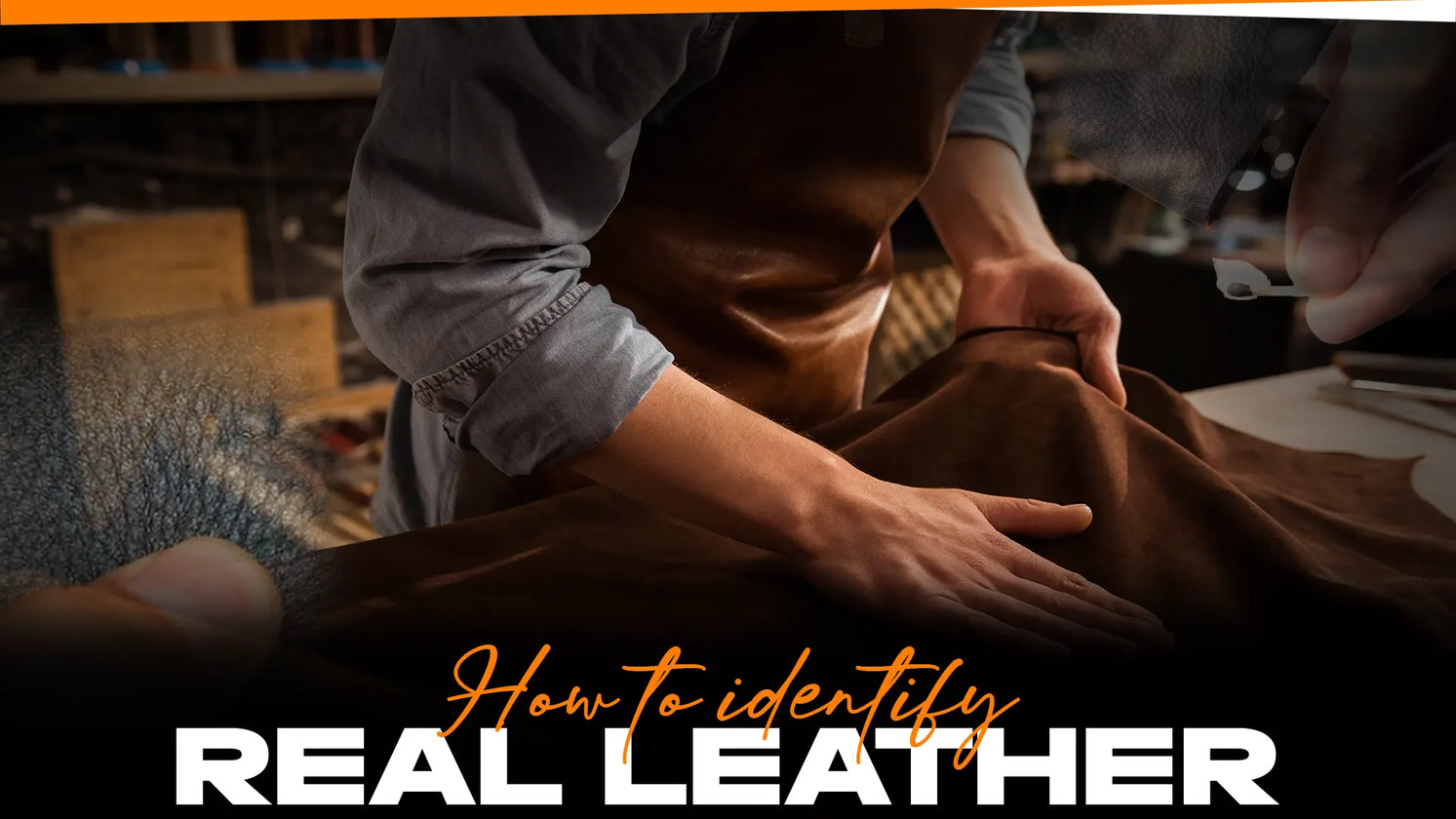
Manufactured from animal hide, real leather is one of the most premium fabrics used all over the globe for garments, bags, and shoes, predominantly. It is soft, luxurious, and very smooth to glide through your fingers. In a report published in 2022, global market size for the leather goods was valued at $245 billion. And it is now estimated to grow at more than 9.5% CAGR through 2032.
This highlights how fancy leather apparel is in demand and will continue to stay in demand. From leather jackets to leather coats, shoes, hats, gloves, belts, phone cases, and bags; everything made from premium quality soft leather is popular among the general masses.
But with the growth of real leather demand, its counterpart, specifically faux leather, also known as artificial/synthetic leather is also paving its ways among buyers. This has made a lot of people wonder how to identify real leather among the fake ones. And with little leather experience, they are left disappointed with the abundance of artificial leather in the name of real leather.
For instance, you have purchased a real leather jacket from some retail store, but you end up finding out that it was totally a faux one, and you just couldn't spot the right difference at the right time.
How disappointing would your situation be?
To combat this situation, you need to learn a few ways of how to identify a real leather. And in this blog, we have come up with those hacks. But before we learn how to differentiate between these leathers, let’s discuss a few leather types that you need to know.
Different Types of Leather You Should Learn to Identify Real Leather
Spotting the right difference between real and faux leather is super challenging as both of them would look the same at a glance. But beware, this is where your decision-making skills jump in! You may never learn how to tell if leather is real or fake, if you will never understand the types of leather. Below we have jotted down a few types of leather and their basic definition that will help you learn a little more about them.
1) Real Leather

To find the answer to your query of how to identify real leather, first understand what real leather is. It is basically named after real animal leather. Obtained from real animal skin, real leather surfaces are usually never uniformed. They will always have blemishes and imperfections. Also, authentic leather is super soft to wear and will age beautifully revealing its stunning patina.
Natural leathers including calfskin leather, cowhide, camel hide, and sheepskin are always expensive and will surely cost you a lot as compared to its fake counterparts. Since real leather is difficult to produce, you cannot argue over its high price point. But it will always last longer than any other.
2) Genuine Leather

Another grade of leather is genuine leather which is also known as a corrected grain. It is considered as the alternative of real leather which is a big misconception. However, the detailed process of obtaining genuine leather includes a small percentage of authentic leather. It is usually soft and has a slightly stretchy or say, some grainy feel.
As far as it has been observed, genuine leather products usually last between five to ten years. However, real leather is expected to age a lot more than this. Also, genuine leather is not as pricey as real one!
3) Full Grain Leather

Now to understand what is full grain leather is, let’s understand full grain first. This refers to the strongest and the most durable part of the hide of an animal. It is found just below the hair and is not sanded or buffed. This means, full grain leather naturally displays more leather characteristics. Also, this is the most beloved cut of the leather which is left unfinished to provide the ultimate aura of leather against the skin.
Full-grain leather garments are super pricey as the amount of leather varies among the animals and working with full grain roughness is quite tough. You can easily identify full-grain leather due to its thinness, blemishes, and scars of animals. Moreover, along with being durable, this leather ages and has a very cool patina that adds more charm in its appeal.
4) Top-Grain leather

Do not confuse full grain leather with top-grain one as this is totally different from the later. It is considered to be the second-highest grade of leather that is cut through from its top layer of blemished hide. Further, it is sanded and refinished to remove the scars. With this process, the all-grain is removed and its imitation is added to make it more uniformed and patterned.
Moreover, top grain leather gets a finishing coat that gives it further durability, breathability, and of course, a natural patina which is revealed with age and time. Please note, this leather is usually less expensive and will become rugged with the use.
5) Faux Leather

A lot of people are confused about what is artificial leather? Well, as the name suggests, it is a fake one! Faux or say fake leather is developed with a fabric base like using polyester in its base. The fabric is then given the leather finish with wax, dye, and polyvinyl. This way, fake leather is given the color and texture just like the real one. However, it is much less durable than the real leather and is expected to crack and peel over time.
So, if you think is faux leather real leather then no, it is not even near real leather. With a life expectancy of 2 to 5 years, faux leather is usually cheap and will not cost you an arm and leg like the real leather. Also, this has a very plasticky, and chemicals like smell so it would be easy for you to instantly recognize it.
6) Vegan Leathers

You may be thinking, what is vegan leather? So, this is another low grade of leather which is usually made from polyurethane. Also, it can be manufactured with sustainable materials including fruit waste and recycled plastic. Basically, it is an alternative to animal leather and is made without using any animal hide. Since it is thinner, it is more prone to wear and tear along with discoloration. \
7) Patent Leather

Another leather type is patent leather which is coated and has a high-gloss finish. A lot of you may wonder, is patent leather real leather? To answer that, this leather can be achieved from real leather as well but it has to undergo a specific process to achieve that particular shiny-glossy appearance. For this purpose, leather is coated with plastic or resin finish to create a glossy surface. It usually is water and dirt resistant
8) Napa Leather

Napa/ Nappa leather is the smoothest quality of leather. And this can be made from any animal hide including cow, sheep, or goat. Apart from being the softest, napa leather is regarded for its durability. It can easily withstand regular use and keep the quality maintained over time.
How to Identify Real Leather - 7 Hacks to the Rescue
Now when you have understood the differences between genuine leather vs full grain and real leather vs fake, this is the time to try these hacks while making your purchase. Learning the difference would help you make an informed decision.
1) Check the Label
One of the easiest and quickest ways to tell if the leather is real or not is to check the label of the manufacturer. For example, at Petersign, we ensure to label our products as per the materials that we have used in the manufacturing process. So, ensure to check the label while buying anything that says real leather.
2) Cutinize the Appearance
Go for the look test of the product. For example, if you have to differentiate between faux leather jacket vs real leather jacket, check out the appearance of both. Real leather jackets will always have a few imperfections, rough edges, and very unique patina or, say, texture. Fake ones will always have a consistent pattern, perfectly smoothed edges, and uniform appearance.
3) Feel & Smell the Material
You can also feel and smell the leather product to differentiate between the real and the fake one. Remember, real leather always feels coarse and it will show wrinkles upon pressing. However, fake leather will not stretch or get any wrinkles at all. Similar goes with the odor. The aroma of real leather is very distinct, however, the fake leather has a very plasticky odor.
4) Look for the Price
Products made with leather are super expensive as compared to faux leather. If you find something that says it is made up of real leather but the price seems too good to be true, understand that it is faux leather. Cowhide and calfskin leather products are more expensive as they are durable, warm, and will age beautifully.
5) Water Absorbent Test
You can perform a water test as well. Add some water droplets on the leather goods and see if it absorbs or forms a puddle. Real leather will always absorb the water however the fake leather will either slide through or stay puddled on the top.
6) Bend Comparison & Pressing Test
Keep in mind that real leather will always show some variation in colors and pores if you bend it. But on the other hand, faux leather has no elasticity and it will never bend, or break if bent.
7) Perform Flame Test
Flame test is also popular to differentiate between the two. Real leather only chars slightly if shown a flame and will smell like burnt hair. However, the faux leather catches flame and smells like burning plastic.
The Ultimate Real Leather Coda!
Now when you have found the answer to the query of how to identify real leather, it will be easier for you to make the right decision. We understand, identifying real leather among the plethora of leather goods available in the market could be definitely challenging. But with the right tips in your mind, you can instantly catch the difference. Also, to shop for real leather jackets, head over to Petersign store and browse through the category to shop your favorite leather garment.
Leave A Reply
Your email address will not be published. Required fields are marked *
Featured Products
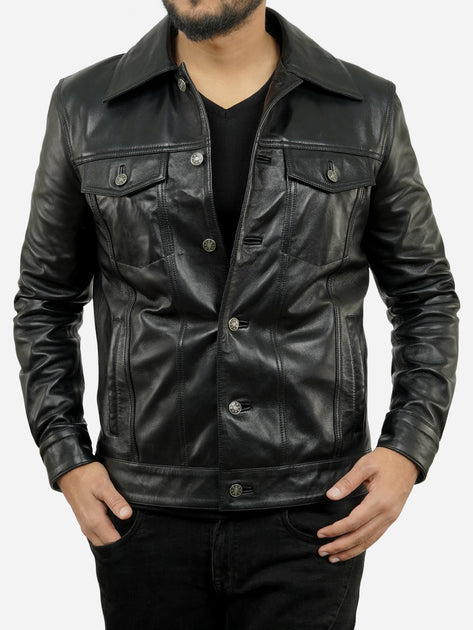
Trucker Leather Jacket
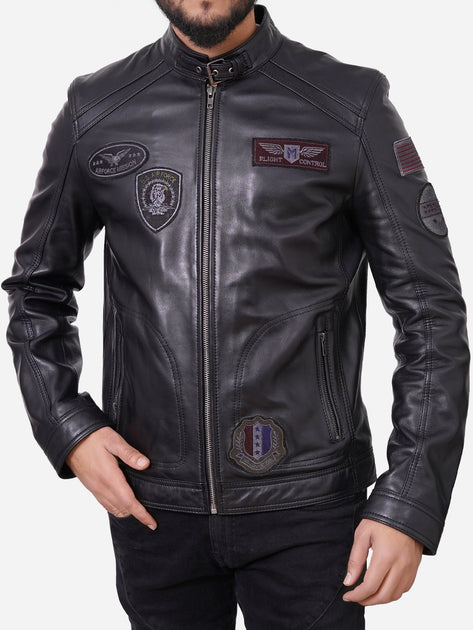
Chester Black Leather Jacket With Patches


